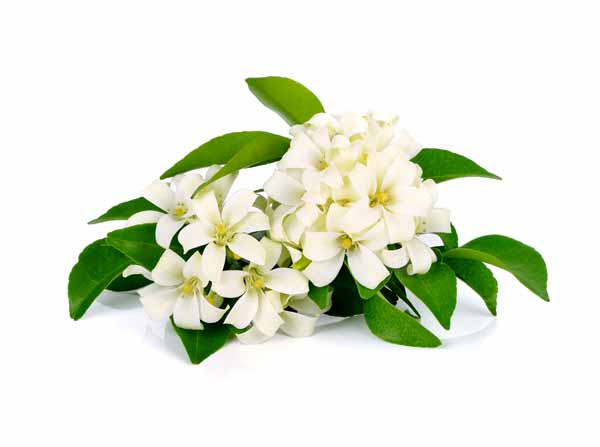Aromatherapy, which have become popular all over the world is all about using the sense of smell for the uplift of your mood and improve how you feel about and connect with body, mind and soul. Because of this the smell which is coming out of the substance you use when practicing aromatherapy is more than important than anything else. Absolutes have become a part of aromatherapy only recently and in olden times a method called enfleurage was used to extract an absolute. In this method the flowers were put in the fat or oil and replacing it every so many days
This method was outmoded by solvent extraction because of the time and labour involved even though twice the amount of oil can be produced. In modern times an absolute is produced by putting the flower or plant matter into hexane and later on separating heavy matter from the plant and leaving the oil and waxes and then evaporating or vacuum extracting out the hexane making a concrete. The resultant concrete is then put in ethanol and the temperature is dropped it minus 250C and this solidify the waxes for removal. The ethanol is then vacuum-extracted from the oil and this leaves just the essential oil.
More Concentrated Form
Absolutes are almost like the essential oils because both are extracted from plants and absolute is more concentrated form of essential oil. The method that is used during the extraction process decides how absolutes differ from essential oils. Essential oils are largely extracted using a steam distillation process. Extraction of absolutes involves using of chemicals and solvents and the extraction method creates more concentrated version of the plant's essence and its fragrance is much more than the fragrance of essential oils. The process does not produce a pure essence which according to the aromatherapy experts is the only drawback.
The extracted substance will contain hints of chemicals and solvents that were used during the extraction process. Absolutes have been used mainly by those involved in the fragrance or perfume industries. But extreme care should be taken when using while using in aromatherapy because absolutes can trigger allergic reaction in some people. There are people who prefer essential oil over absolutes for the use of aromatherapy but there are some plants whose essences cannot be extracted using the traditional distillation methods. For such plants the chemical extraction processes have to be used and Jasmine and Honeysuckle are two such plants.
Many Popular Absolutes
There are many popular absolutes available in the market and some of the popular ones are Jasmine Absolute, Lavender Absolute, Oakmoss Absolute, Rose Absolute and Lotus Absolute. Jasmine is extracted using solvents and it offers a delicate and lovely scent. Jasmine is used for years in perfumes and therapy sessions and it has a heady fragrance and this absolute is an effective aphrodisiac. Women with irregular menstrual cycles use jasmine absolute because it helps in regulating the menstrual cycles. It is also known for relieving headaches and is an effective antiseptic and antidepressant. Jasmine absolute has sedative qualities also.
Jasmine (Jasminum officinale) is an unusual and striking delicate fragrance that is intense for some people. It comes from the olive family and is a native of India. The jasmine absolute is extracted from the flowers of the plant and it can be called an essence than an essential oil. The flowers are usually picked at night when the fragrance is at its peak and by sunrise, most of the fragrance will be evaporated from the flowers. It takes about 1,000 pounds of uncrushed jasmine flowers to produce one pound of jasmine oil. Solvent extraction is used to create an absolute and the oil is produced by steam distillation of the absolute.
Evergreen Shrub
Jasmine is an evergreen shrub or vine that may grow as long as 30 feet with delicate, bright green leaves and star-shaped white flowers which has a strong and pleasing fragrance. Jasmine is also called the Queen of the Night and women find the aroma quite seductive and striking. The common jasmine warms the womb and help childbirth. Chinese use the flowers to treat hepatitis, liver cirrhosis and dysentery. Jasmine root was used to treat headaches, insomnia, pain due to dislocated joints and rheumatism during olden times.

Jasmine has gentle analgesic action and is uplifting, anti-inflammatory, antiseptic, stimulating and antibacterial. Jasmine oil blends well with rose, sandalwood, clary sage, and all citrus oils and jasmine is non-toxic, non-irritating and generally non-sensitizing. There are some types of plant which do not lend themselves to steam distillation because they are too delicate or their fragrance and therapeutic essences cannot be released by water alone. This is when these oils are produced as absolutes and these have therapeutic value like essential oils. Jasmine and Rose in particular are delicate flowers whose oils are often found in absolute form.
Extracted From Different Species
Jasmine absolute oil can be extracted from different species of jasmine like common jasmine (Jasminum Officinale) and Spanish jasmine (Jasminum Grandiflorum). Jasmine absolute oil is extracted from the white flowers of the plant, and this plant can reach a height of 10 to 15 feet, and bears dark green leaves. Its flowers usually blossom at night, but the plant grows from summer until fall. Pakistan has named jasmine its national flower. In India, it is regarded as a holy flower by the Hindus.
Jasmine absolute oil is known to be a vital component in making popular perfumes like Chanel No. 5 and Eau de Sauvage from France. In culinary, it is used to add flavour to alcohol, confectionery, and desserts and it is also added in body lotions, shampoos, and soaps. In South of India, jasmine flowers are used in garland preparation and as a hair decoration. Jasmine absolute oil blends well with rose, neroli, bergamot, petitgrain,sandalwood, citruses, palmarosa, geranium, and rosewood. Jasmine absolute rejuvenates skin and helps in treating dry or dehydrated skin, eczema, and dermatitis. Jasmine absolute relieves menstrual problems and labour pains and relieves pain during menstruation, and helps regulate menstrual cycle. It is helpful during childbirth as it strengthens contractions and promotes breast milkflow
-
Just love this, nice fragrance, would be happy to recommend ........ thanks
Dominick 23 September, 2015
Write a Review





